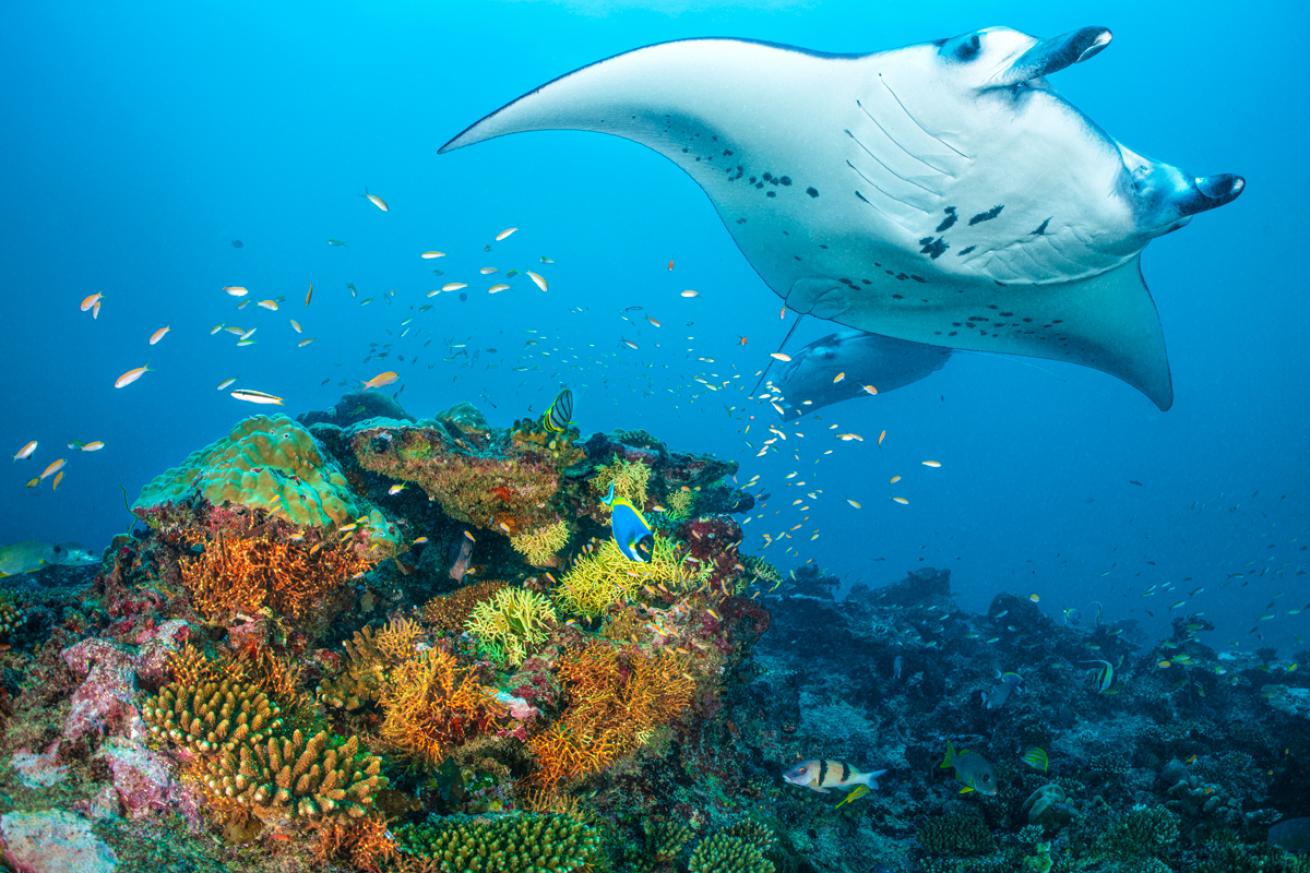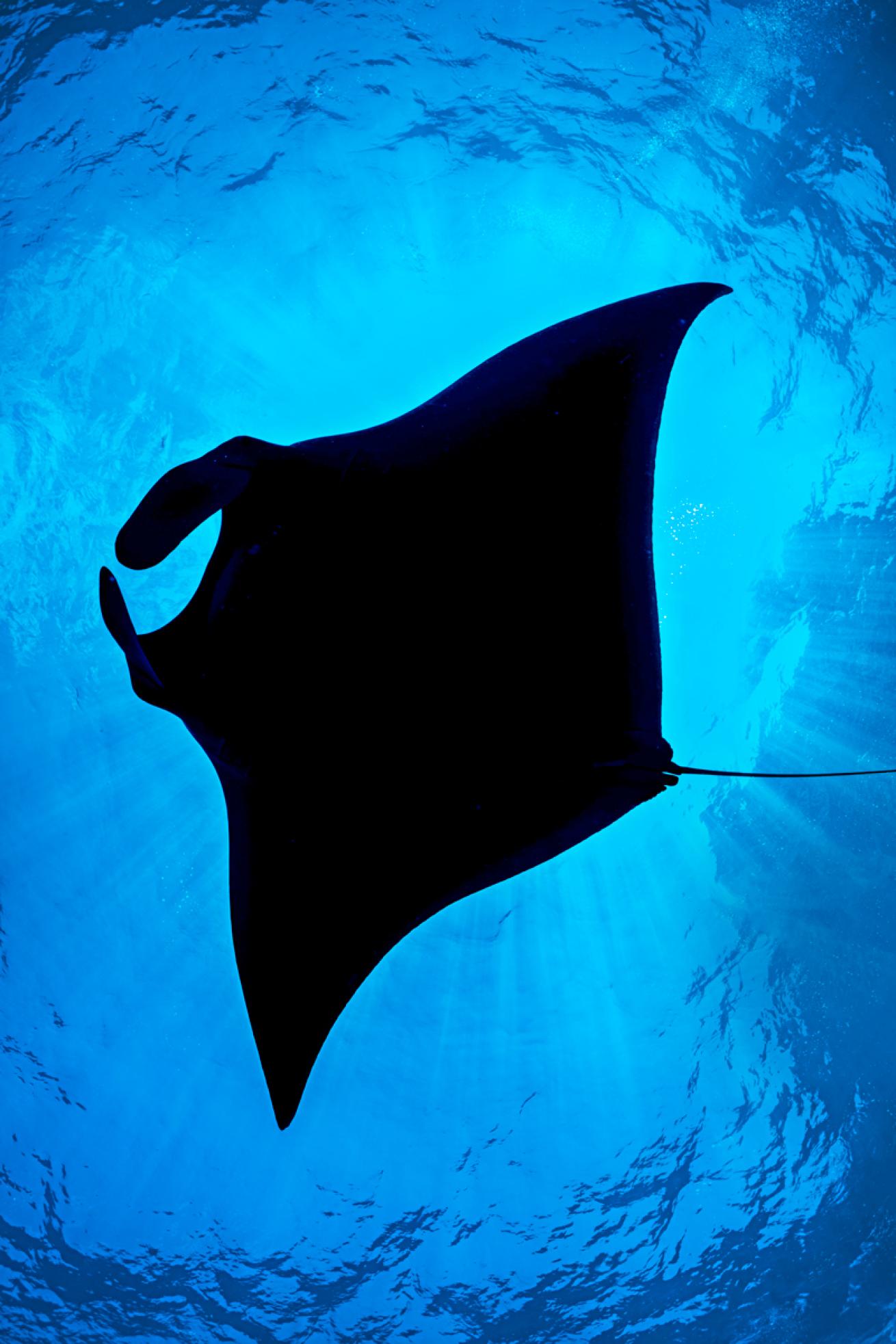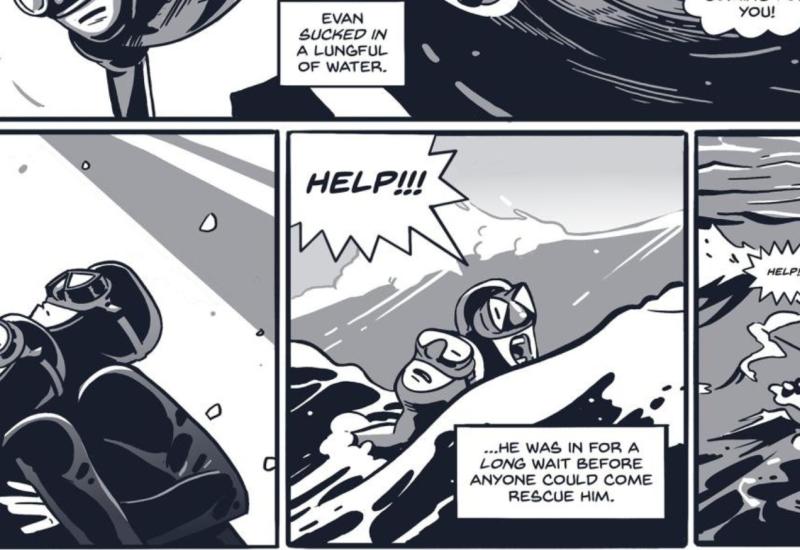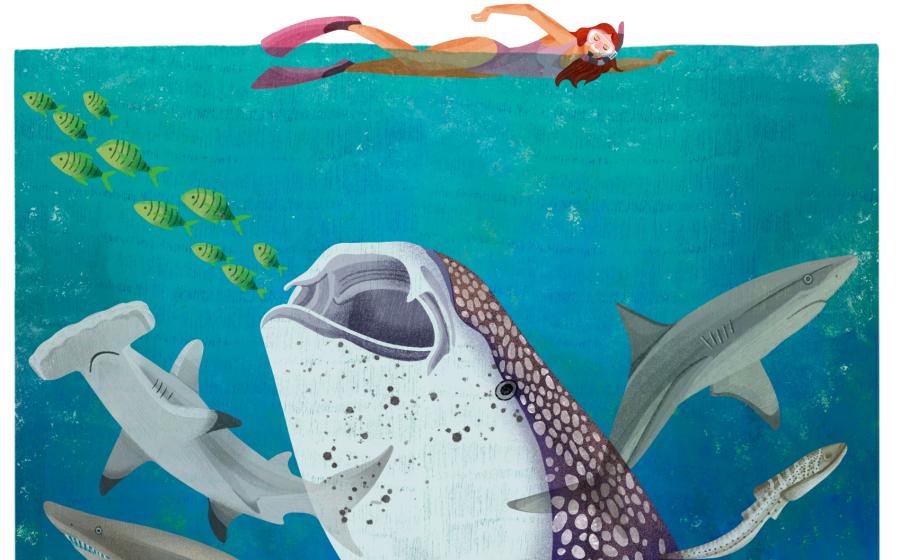Winged Wonders: Making the Most of Magical Manta Encounters

Alex MustardGEAR Nikon D850 with 28-70mm lens and Nauticam WACP-1 lens
SETTINGS f/10; 1/200; ISO 400
Mantas are captivating creatures. Graceful and intelligent, they reward divers with memorable encounters. But capturing standout images from these experiences takes skill. The key to quality manta photos is quality encounters; how you behave in the water will influence your shots. Listen carefully to the expert guidance from your local dive guide. This advice may vary from location to location. For example, in Socorro, the mantas respond to divers floating out in the blue, while in Kona, staying still on the bottom and attracting a cloud of plankton with your dive light will bring rewards.
Mantas are large and don’t like being crowded at their level in the water. They tend to be much more relaxed maneuvering around divers that stay still and below them on the seabed or snorkelers that keep well above them at the surface. However, unlike most other photography situations, success relies on the whole group following the dive plan. It only takes one person to ruin it, and they probably won’t do it on purpose. They just get hypnotized by what their camera is seeing and drift up toward the mantas, scaring them away.
Related Reading: World’s Largest Known Manta Ray Population Found Off Ecuador
Mantas are big, so you’ll want wide-angle photography gear, although I usually prefer my zoom lens to my fisheye. Zoom lenses give flexibility because you can never be sure how close the rays will come. Even when mantas come very close, a fisheye will give an unflattering perspective from most angles, capturing them with a big belly and tiny wings. The only time I will choose a fisheye with mantas is when I hope to get multiple individuals in a frame, such as at a busy cleaning station or at a major feeding event. If you use strobes, they need to be out on long arms and on reasonably high power so light carries to the rays without too much backscatter.

Alex MustardGEAR Nikon D850 with 28-70mm lens and Nauticam WACP-1 lens
SETTINGS f/10; 1/400; ISO 400
Mantas are most reliably encountered at cleaning stations. My best advice is to do something other than fixate and track them with the lens. Instead, think of the compositions you want, set one up and wait for the manta to swim into position. Rather than aim for a manta swimming in blue water, I like using the reef—or even another manta—as a foreground. I call this latter composition the Star Wars shot—with one manta looming over the top of the frame and another farther away. The cleaning activity itself rarely makes for good pictures because the most common cleaner —wrasses—are too tiny compared to the rays to show up well. The notable exceptions are the bright-orange Clarion angelfish in Socorro, which will boss the frame, especially when they swarm around a ray.
The photography techniques for manta feeding events differ in the daytime and nighttime. Daytime dives usually involve multiple rays and plankton-filled water. I strongly recommend leaving strobes behind—they would simply light up backscatter—and working with a fisheye lens to capture as much of the scene as possible. These shots are usually improved by white-balancing and desaturating the mantas a little in post-production. Nighttime manta dives, like in Kona or Fesdhoo Lagoon in the Maldives, work better with strobes, but be prepared to work with a higher ISO and longer shutter speeds to capture the torch beams, which will add depth to the images. Use rear- or second-curtain flash sync if you have it.
Behind The Shot
1 I wanted to capture these reef mantas at a cleaning station in Laamu Atoll in the Maldives. Mantas will usually swim into a current to the cleaning station, so I positioned myself upstream of the station, which gave the mantas clear access and also meant they were swimming right at my lens. I set up my composition to include the most attractive part of the reef and simply waited for the rays to get in position. I used an open aperture and faster-than-normal shutter speed to quell ambient light and get plenty of strobe light on the scene.
2 Mantas have such a recognizable shape that it is no wonder they are a popular design on dive T-shirts the world over. Their shape also makes them the best underwater subjects for the silhouette shot, which is how I captured this oceanic manta in Socorro. The aim is to get the manta directly overhead so it is as symmetrical as possible. Before these dives, it is good to figure out how to quickly turn off your strobes. On many cameras, you can program a function button to activate “Flash Off,” while with my flash trigger, I know that if I exceed the camera’s sync speed, it does not fire, which means that I only have to click the shutter speed up a click or two to have silhouettes. If all else fails, just shoot, shoot, shoot, and soon your strobes will be unable to recycle, and you will get plenty of silhouettes!
Related Reading: The Future of AI Editing and Underwater Photography
Where To See Them
Reef and oceanic mantas can be encountered in many locations around the world. Socorro, a remote liveaboard destination in the Pacific, accessed out of Cabo in Mexico, is my favorite spot because the oceanic mantas aren’t just huge, they’re also friendly. Mantas have the biggest brain of any fish, 10 times the size of the giant whale shark, and looking into their eyes in Socorro leaves you with no doubt that the curiosity goes both ways.










